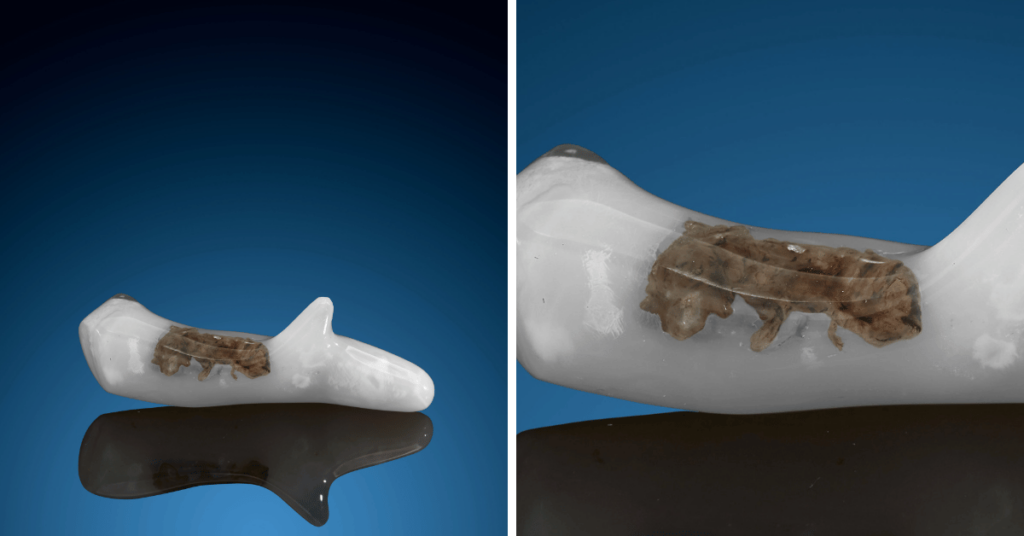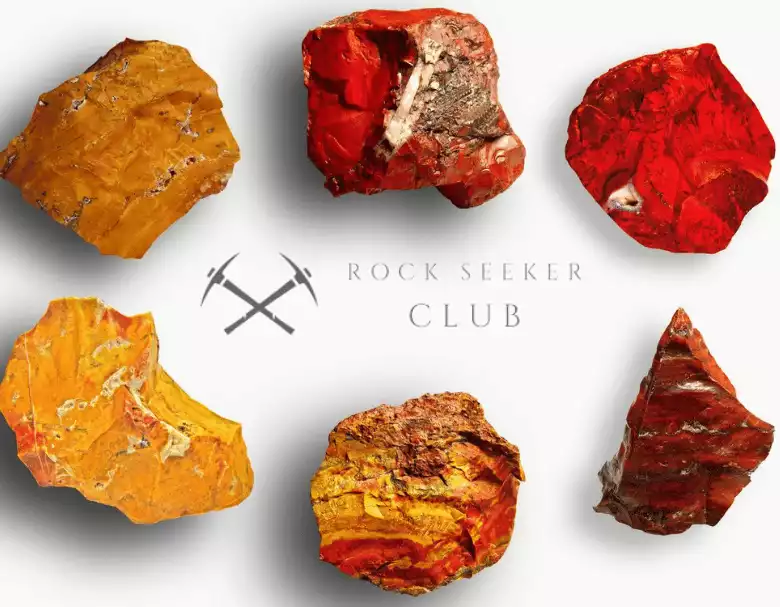Bee Fossilized in Opal
In the heart of Texas, in the esteemed Perot Museum of Nature and Science, a unique spectacle takes center stage: an insect fossil encapsulated in opal. And guess what? A twin has been discovered – a second insect preserved in opal, but this time, it’s a bee, frozen forever in a beautiful white “Jelly” Opal!
Read About The Other Insect Found in Opal
You may be thinking, “Fossils in amber? Sure! But in opal?” Indeed, it’s a much, much rarer sight! It’s like finding a four-leaf clover on a Tuesday morning. And here we have the second clover of its kind!

How Did The Bee Get Stuck?
But how did our buzzy friend end up inside an opal? There are two theories. One suggests that amber, which we often find preserving insects, slowly transformed into opal over millions of years. The other idea is quite dramatic! Imagine this: fiery volcanic fluid flowing into cracks, cooling down, and leaving water behind. This water then deposits silica, setting the stage for the grand performance of “opalization”. Quite the spectacle, isn’t it?
Where Did The Specimen Come From?
This precious bee was unearthed from Javanese Opal, a gem fondly known as Kalimaya by the locals. The opal has been extracted since the 1970s from various regions, including the Cilayang Pits, a hotspot for this gleaming white “Jelly” Opal. With fossils found here dating back to the Lower Pliocene and Upper Miocene ages, our opal bee could be a staggering 4 to 7 million years old!
What’s more, the discovery of this bee is not just cool, it’s scientifically groundbreaking. It gives us a sneak peek into the life and times of bees from millions of years ago. For instance, this ancient bee had a longer abdomen than our modern bees. Could this mean it had a different diet? It’s a mystery waiting to be solved!
This enchanting gem measures 1.61 x 0.56 x 0.44 inches (about the size of a hefty grape) and weighs 23.048 carats. It’s not just a fossil, it’s a gemstone, a slice of history, and a scientific marvel, all rolled into one!
So, the next time you see a bee buzzing around, remember our opalized friend, a tiny yet significant reminder of the wonders our planet holds, waiting to be discovered!
- Online rock and mineral club for collectors of all levels!
- Find community with like-minded rock and mineral enthusiasts.
- Monthly Giveaways!
- Free Access to Entire Digital Library of Products (annual memberships)


